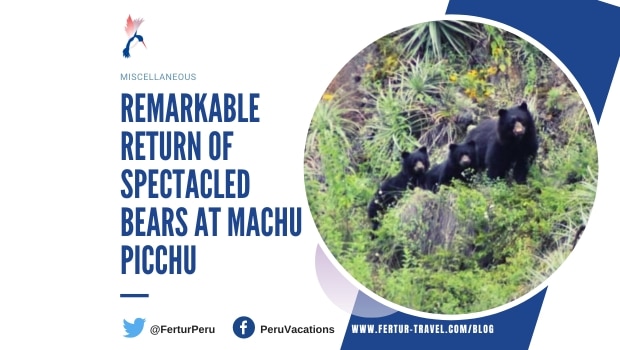
The Spectacular Return of Spectacled Bears at Machu Picchu
In the heart of Peru’s ancient wonder, the Machu Picchu Sanctuary, a rare and heartwarming scene unfolded this week as park rangers sighted a family of Andean bears, a notable occurrence for those tracking the bear in Peru.
In the lush, rugged terrains of the Andes Mountains, the spectacled bear Peru is known for, also referred to as ‘ukuko’ in Cusco, has become a focal point for wildlife conservation efforts.
There’s been a notable increase in Andean bear sightings at Machu Picchu, attributed to improved conservation efforts. After installing 200 camera traps, 29 adult bears and 4 cubs were identified, significantly more than the 12 bears previously recorded, Peru’s daily El Comercio reports.
The uptick in sightings is linked to better monitoring, waste management, and tourist activity regulation. Additionally, some bears will be tracked with satellite collars to further study and protect them, marking a success in conservation efforts and enhancing the sanctuary’s attraction to tourists.
Their presence is a testament to the rich Machu Picchu wildlife and positions them as a unique tourist attraction within the wildlife sanctuary, a site revered for its profound cultural significance and natural splendor.
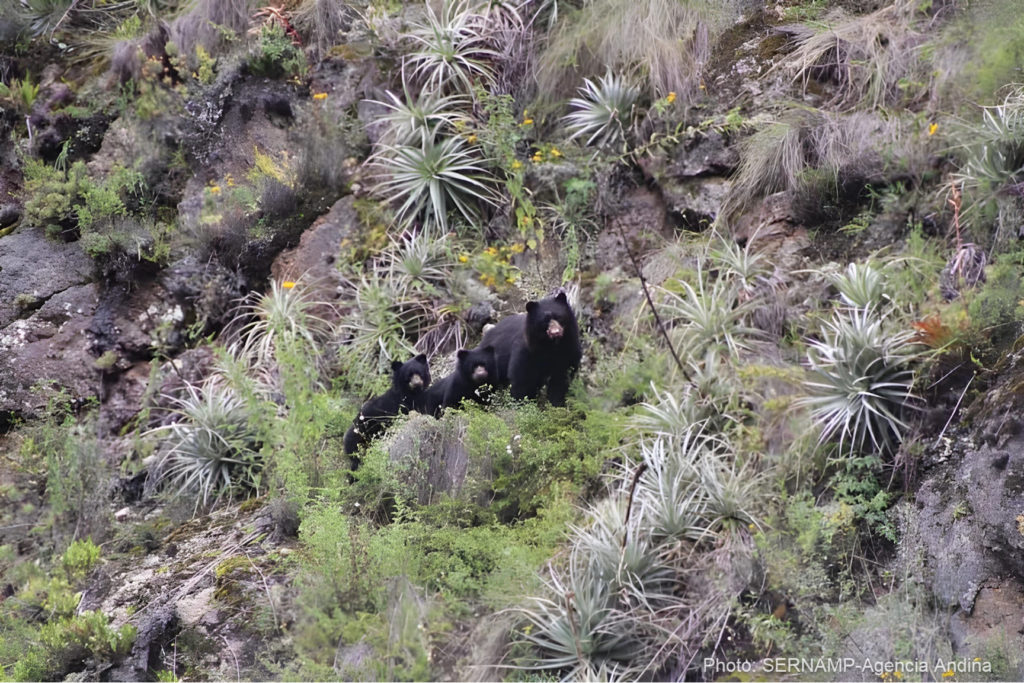
This unique intersection of wildlife and heritage underscores the critical need for wildlife protection and environmental conservation strategies to safeguard these vulnerable creatures and their habitats.
The recent sighting of a bear family by park rangers during a routine patrol in the Machu Picchu Sanctuary has sparked renewed interest in the area’s ecological diversity.
The discovery highlights the sanctuary as a must-visit destination for wildlife tourism and wildlife conservation enthusiasts, showcasing Machu Picchu not only for its historical allure but also as a crucial habitat for the conservation of bears in the park.
- The Rise of Spectacled Bears in Machu Picchu
- Challenges in Conservation and Observation
- Impact of Tourism and Human Activity
- The Role of Machu Picchu in Wildlife Conservation
- Your Chances of Spotting a Spectacled Bear
- Wildlife Encounters on the Inca Trail
- FAQs
- Plan Your Peru Adventure with Fertur Peru Travel
The Rise of Spectacled Bears in Machu Picchu
The spectacled bear conservation status has seen a remarkable resurgence within the Machu Picchu Sanctuary, a testament to the area’s thriving biodiversity and effective conservation measures. Key observations include:
- Monitoring Efforts and Habitat Expansion Over the past three years, intensive wildlife monitoring has shed light on the population size of Andean bears, revealing their presence across an impressive 95% of the sanctuary’s vast 91,250 acres, a significant increase from less than 30% in previous years. The expansion of wildlife habitat within the sanctuary is not only crucial for the species’ long-term conservation but also underscores the sanctuary’s pivotal role in providing a safe haven for these Andean bears.
- Population Growth and Conservation Initiatives The surge in the spectacled bear population at Machu Picchu is a beacon of hope for future conservation planning. Conservation organizations, including the Wildlife Conservation Society and the Inkaterra reserve, are at the forefront, innovating with new tools for population evaluation and reintroducing bears that were illegally captured back into their natural habitat. The sanctuary’s commitment to biodiversity conservation is evident in its rich biodiversity, which includes four distinct ecosystems that are particularly conducive to the spectacled bear’s survival.
- Significance of Sightings and Research Wildlife monitoring efforts have been rewarded with sightings of spectacled bears, such as the memorable encounter by a tourist in 2016 and the heartwarming observation of a bear family by park rangers, which underscore the sanctuary’s significance as a thriving natural habitat for these animals.
Research spearheaded by Spectacled Bear Conservation (SBC) near Machu Picchu is pivotal, gathering essential baseline data on bear populations and ecosystem health. The use of advanced technology like camera traps and collaring for wildlife research provides invaluable insights into bear movements and potential threats, aiding the effective management of the Historic Sanctuary of Machu Picchu and underscoring the urgency of continuous conservation efforts.
Challenges in Conservation and Observation
Despite the recent heartwarming discovery of a family of Andean bears in the Machu Picchu Sanctuary, the conservation of these endangered species in Peru is fraught with significant challenges.
- Threats to Survival:
- The relentless deforestation due to forest fires, land clearing for agriculture, and the expansion of crop cultivation, including sugarcane, rice, and corn, poses a significant threat to environmental sustainability.
- Ecosystem conservation is under threat from habitat fragmentation and loss, which are exacerbated by the construction of infrastructure, mining operations, and the commercialization of land for tourism services.
- Conservation Efforts and Challenges:
- The Spectacled Bear Conservation (SBC) and WWF are at the forefront, conducting research and community empowerment programs.
- SBC’s initiativesStrategies to ensure biodiversity management include habitat protection, mitigating natural threats, and minimizing the impacts of tourism. However, the challenge of securing sufficient land and funds for these initiatives remains formidable.
- Human-Wildlife Conflict:
- Conflict with farmers and livestock owners, leading to retaliatory hunting.
- Wildlife ecology faces the challenge of balancing the economic benefits of tourism, crucial for local communities, with the imperative need to protect the habitats of indigenous wildlife species.
The future of the spectacled bear in Machu Picchu and its environs depends on tackling these complex issues through dedicated conservation of species efforts, scientific research, and active community involvement.
Impact of Tourism and Human Activity
The spectacled bears at Machu Picchu are at the heart of a complex challenge: how to manage the impact of tourism and human activity while promoting wildlife education to ensure the sanctuary’s popularity does not compromise its role in preserving native wildlife. Key considerations include:
- Tourist InteractionsIncidents where tourists have improperly interacted with spectacled bear cubs underscore the urgent need for enhanced wildlife awareness and education on appropriate wildlife interactions. Such behaviors can lead to bears becoming agitated, aggressive, and dependent on human-provided food, significantly altering their natural behaviors.
- Feeding Practices On the Inca Trail, advisories against leaving food are crucial for wildlife care, aiming to prevent alterations to the spectacled bears’ diet and eating routines. Despite these warnings, varying levels of compliance pose risks to bear health and their natural foraging habits.
- Conservation vs. Tourism With roughly a million annual visitors, ecological conservation is paramount in managing the protected area’s high biodiversity without impacting the bear population. Strategies include strict guidelines on food disposal and wildlife interactions, ensuring the sanctuary remains a haven for spectacled bears amidst tourist activities.
The Role of Machu Picchu in Wildlife Conservation
Machu Picchu’s Role in Wildlife Conservation
- Native Habitat and Species Protection:
- Spectacled bears, a key species in Peruvian wildlife, are native to South America, thriving in the cloud forests and high Andean moorland within the Neotropical biogeographic realm.
- The Historic Sanctuary of Machu Picchu, spanning 125 square miles, is home to diverse ecosystems that are crucial for the survival of spectacled bears, enriching the area’s flora and fauna.
- Efforts led by the Spectacled Bear Conservation (SBC) are in motion to collaborate with the Peruvian government and local communities in biodiversity preservation, aiming to declare the area around Machu Picchu a UNESCO Biosphere Reserve, aiming to protect 1.5 million acres of land.
- Conservation Initiatives:
- The SBC is diligently crafting a long-term conservation plan for Machu Picchu that not only safeguards the bears but also enhances the ecological value of the entire cloud forest ecosystem.
- In Aguas Calientes, the Inkaterra hotel hosts a ”˜Spectacled Bear Conservation Project’. The conservation initiative, which welcomes voluntary donations, is a testament to the strength of community programs in bolstering the protection of these bears and indicating widespread community involvement in conservation efforts.
- Collaboration and Research:
- The Wildlife Conservation Network (WCN) collaborates with local communities to ensure wildlife preservation, focusing on safeguarding the spectacled bear’s habitat and food sources. This partnership underscores the pivotal role of community engagement in conservation efforts.
- Since 2007, the initiative has been dedicated to protecting the dry forest regions of Northern Peru, a vital habitat for the spectacled bear, also known as ‘spectacle bears’ or ‘Andean bears’. Their efforts are a testament to the commitment to maintaining species diversity in the area.
- As a UNESCO world heritage site, this sanctuary is a protected natural area, vigilantly guarded by the authorities of Machu Picchu, Cusco, and Peru. Access is limited strictly to individuals authorized by the Ministry of Culture of Peru.
Your Chances of Spotting a Spectacled Bear
While the recent count of 33 bears (29 adults and 4 cubs) around Machu Picchu is encouraging news for conservation, seeing these elusive creatures requires both luck and timing. Like their
namesake Paddington, these bears prefer quiet solitude to tourist crowds, typically remaining in the remote reaches of the cloud forest.
For the best chance of a sighting, visit Machu Picchu during the peaceful early morning or late afternoon hours. However, if you’re set on seeing these remarkable animals, consider a
visit to the Andean Bear Conservation Center at the Inkaterra Machu Picchu Pueblo Hotel in Aguas Calientes, where you can learn about and observe these bears in a conservation setting.
Wildlife Encounters on the Inca Trail
The Inca Trail offers prime opportunities for spotting spectacled bears, particularly near the Sun Gate (Intipunku). With limited daily visitors and preserved natural habitats, the trail provides better
chances for wildlife sightings than Machu Picchu itself.
Beyond bears, the trail showcases Peru’s diverse wildlife: alpacas and llamas frequent the ruins, while lucky hikers might spot vicuñas, giant hummingbirds, and the vibrant cock-of-the-rock bird.
Our Inca Trail tours range from day hikes to the classic four-day trek, featuring stops at lesser-known ruins like Wiñay Wayna and Chachabamba. Each tour includes expert guides, transportation,
meals, and train connections.
FAQs
What are the spectacled bears at Machu Picchu?
The spectacled bears at Machu Picchu benefit from the establishment of the Historic Sanctuary of Machu Picchu by the Peruvian State, a vast natural protected area encompassing 32,592 hectares of mountains and jungle in the Cusco region. This sanctuary is a vital refuge for these vulnerable mammals.
How is the spectacled bear distinguished from other bears?
The spectacled bear, an endemic species to the region, is instantly recognizable by the cream-colored fur around its eyes, resembling eyeglasses, which inspired its name. This unique fur pattern extends down the bear’s throat and chest, with each bear displaying a distinctive set of these ‘spectacle’ markings against a typically black or dark brown coat.
What is the significance of Machu Picchu?
The hidden location of Machu Picchu, which kept it concealed from the lower areas and undiscovered for centuries, adds to its allure as one of the most well-preserved ancient landmarks and a significant repository of Inca history.
Plan Your Peru Adventure with Fertur Peru Travel
Let us customize your perfect Peru itinerary, balancing iconic sites like Machu Picchu with unique experiences like spotting spectacled bears on the Inca Trail. With decades of experience, we craft
luxury trips that optimize your time across the Andes, coast, and Amazon.
With the giant Andes Mountains, ancient Inca ruins, beautiful coastal cities and the wild Amazon jungle all to explore, it can be difficult fitting everything into a single realistic itinerary based on the
time you have available.
Here at Fertur Travel we have been operating Peru tours for more than three decades. To start planning your personalized adventure, including the classic four-day Inca Trail trek, connect with
our expert team.
 Vargas Llosa and other celebrity sightings at Machu Picchu so far in 2017
Vargas Llosa and other celebrity sightings at Machu Picchu so far in 2017 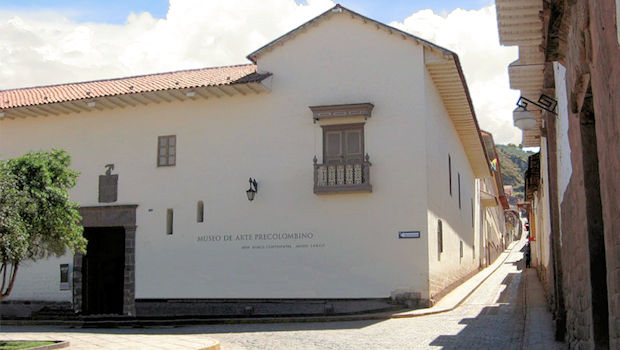 Treat yourself to Cusco’s Museum of Pre-Columbian Art
Treat yourself to Cusco’s Museum of Pre-Columbian Art 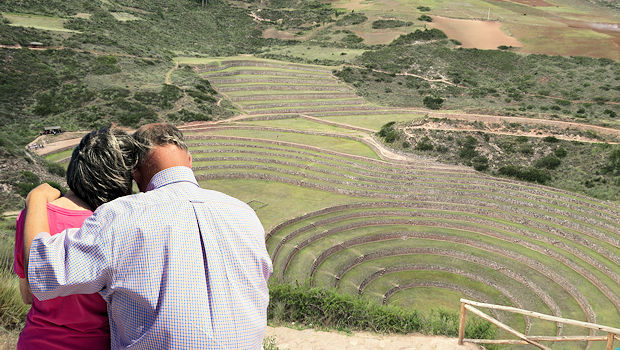 Great Peru Tours for Seniors
Great Peru Tours for Seniors 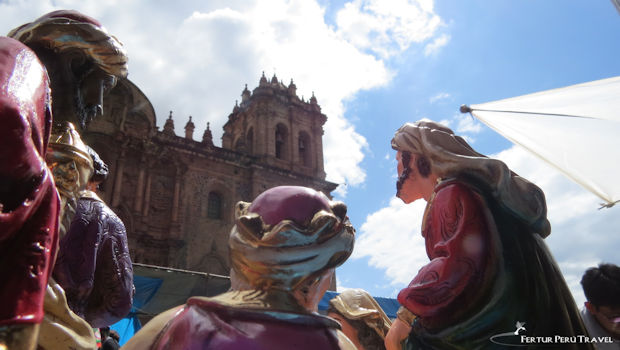 Happy Holidays from Fertur Peru Travel!
Happy Holidays from Fertur Peru Travel!  Do they celebrate Halloween in Peru?
Do they celebrate Halloween in Peru?  Wonder Woman’s magic bracelets re-imagined by real life heroine from Cusco
Wonder Woman’s magic bracelets re-imagined by real life heroine from Cusco  Manu Family Vacation and an Actor’s Tribute to Roger Corman
Manu Family Vacation and an Actor’s Tribute to Roger Corman 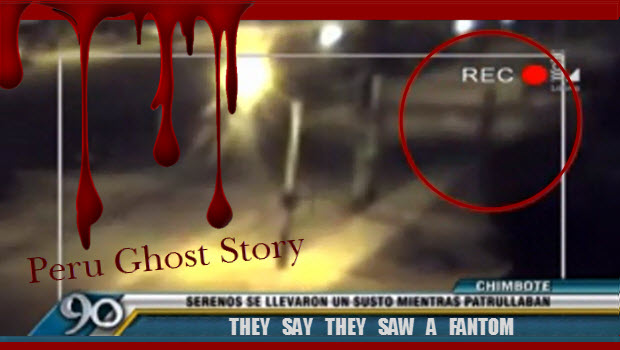 Spooky Pre-Halloween Sighting By Security Patrol in Peru
Spooky Pre-Halloween Sighting By Security Patrol in Peru